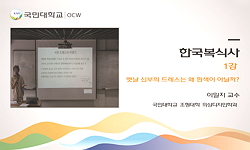An environmentally friendly artificial suede manufacturing procedure is established to improve the working condition, to lower the manufacturing cost and to make quality control easier. It binds fibers through hot melt pressing of PEE microfibers in t...
http://chineseinput.net/에서 pinyin(병음)방식으로 중국어를 변환할 수 있습니다.
변환된 중국어를 복사하여 사용하시면 됩니다.
- 中文 을 입력하시려면 zhongwen을 입력하시고 space를누르시면됩니다.
- 北京 을 입력하시려면 beijing을 입력하시고 space를 누르시면 됩니다.

폴리에스터계 탄성 극세사를 이용한 인조스웨드용 부직포의 제조와 가공(IV) -탄성 해도사 혼합 다층 부직포의 염색성 및 물성- = Manufacturing and Finishing of Multi-layered Nonwoven for Artificial Suede Using Elastic Polyester Microfiber(IV) -Dyeing and Mechanical Properties of Multi-layered Nonwoven Using Elastic Islands-in-a-sea fibers-
한글로보기https://www.riss.kr/link?id=A101371026
- 저자
- 발행기관
- 학술지명
- 권호사항
-
발행연도
2003
-
작성언어
Korean
- 주제어
-
등재정보
KCI등재
-
자료형태
학술저널
- 발행기관 URL
-
수록면
33-38(6쪽)
-
KCI 피인용횟수
0
- 제공처
- 소장기관
-
0
상세조회 -
0
다운로드
부가정보
다국어 초록 (Multilingual Abstract)
An environmentally friendly artificial suede manufacturing procedure is established to improve the working condition, to lower the manufacturing cost and to make quality control easier. It binds fibers through hot melt pressing of PEE microfibers in the CDP/PEE islands-in-a-sea fiber eliminating the conventional manufacturing processes such as polyurethane impregnation, PVA treatment and slicing. The dyeing characteristic of multi-layered suede, whose K/S value was 12.4, was superior to the reference suede (K/S value: 9.6). Dyeing fastness of the nonwoven was generally superior to that of the reference suede. Especially wet abrasion and thermomigration were 1~2 grade higher than those .of the reference suede. The specifications of the environmentally friendly artificial suede after finishing were: weight; 190 g/$m^2$, thickness; 0.62 mm, fibrous density; 0.32 g/$\textrm{cm}^2$. It was lighter, thinner and more denser than those of the reference suede. The tensile strength, the tearing strength and the stretch recovery rate were comparable to the reference or a little better; the stiffness, the drape property and the anti-abrasion were excellent; the elongation and the compression recovery rate were somewhat unsatisfactory.
동일학술지(권/호) 다른 논문
-
- 한국섬유공학회
- 이병춘
- 2003
- KCI등재
-
폴리벤족사졸 전구체를 이용한 새로운 내열성 섬유고분자의 개발(I) -PHA 유도체의 합성과 열고리화-
- 한국섬유공학회
- 백두현
- 2003
- KCI등재
-
Poly(ethylene 2,6-naphthalate)/Poly(ethylene terephthalate) 블렌드 섬유의 연신에 의한 구조 및 물성 변화 연구
- 한국섬유공학회
- 서은수
- 2003
- KCI등재
-
- 한국섬유공학회
- 송민규
- 2003
- KCI등재
분석정보
인용정보 인용지수 설명보기
학술지 이력
| 연월일 | 이력구분 | 이력상세 | 등재구분 |
|---|---|---|---|
| 2022 | 평가예정 | 계속평가 신청대상 (등재유지) | |
| 2017-01-01 | 평가 | 우수등재학술지 선정 (계속평가) | |
| 2013-01-01 | 평가 | 등재 1차 FAIL (등재유지) |  |
| 2010-01-01 | 평가 | 등재학술지 유지 (등재유지) |  |
| 2008-09-03 | 학술지명변경 | 외국어명 : The Korean Fiber Soceity -> Textile Science and Engineering |  |
| 2008-01-01 | 평가 | 등재학술지 유지 (등재유지) |  |
| 2006-01-01 | 평가 | 등재학술지 유지 (등재유지) |  |
| 2005-03-05 | 학술지명변경 | 외국어명 : The Korean Fiber Soceity -> Textile Science and Engineering |  |
| 2003-01-01 | 평가 | 등재학술지 선정 (등재후보2차) |  |
| 2002-01-01 | 평가 | 등재후보 1차 PASS (등재후보1차) |  |
| 1998-07-01 | 평가 | 등재후보학술지 선정 (신규평가) |  |
학술지 인용정보
| 기준연도 | WOS-KCI 통합IF(2년) | KCIF(2년) | KCIF(3년) |
|---|---|---|---|
| 2016 | 0.13 | 0.13 | 0.15 |
| KCIF(4년) | KCIF(5년) | 중심성지수(3년) | 즉시성지수 |
| 0.17 | 0.17 | 0.29 | 0.02 |




 ScienceON
ScienceON




